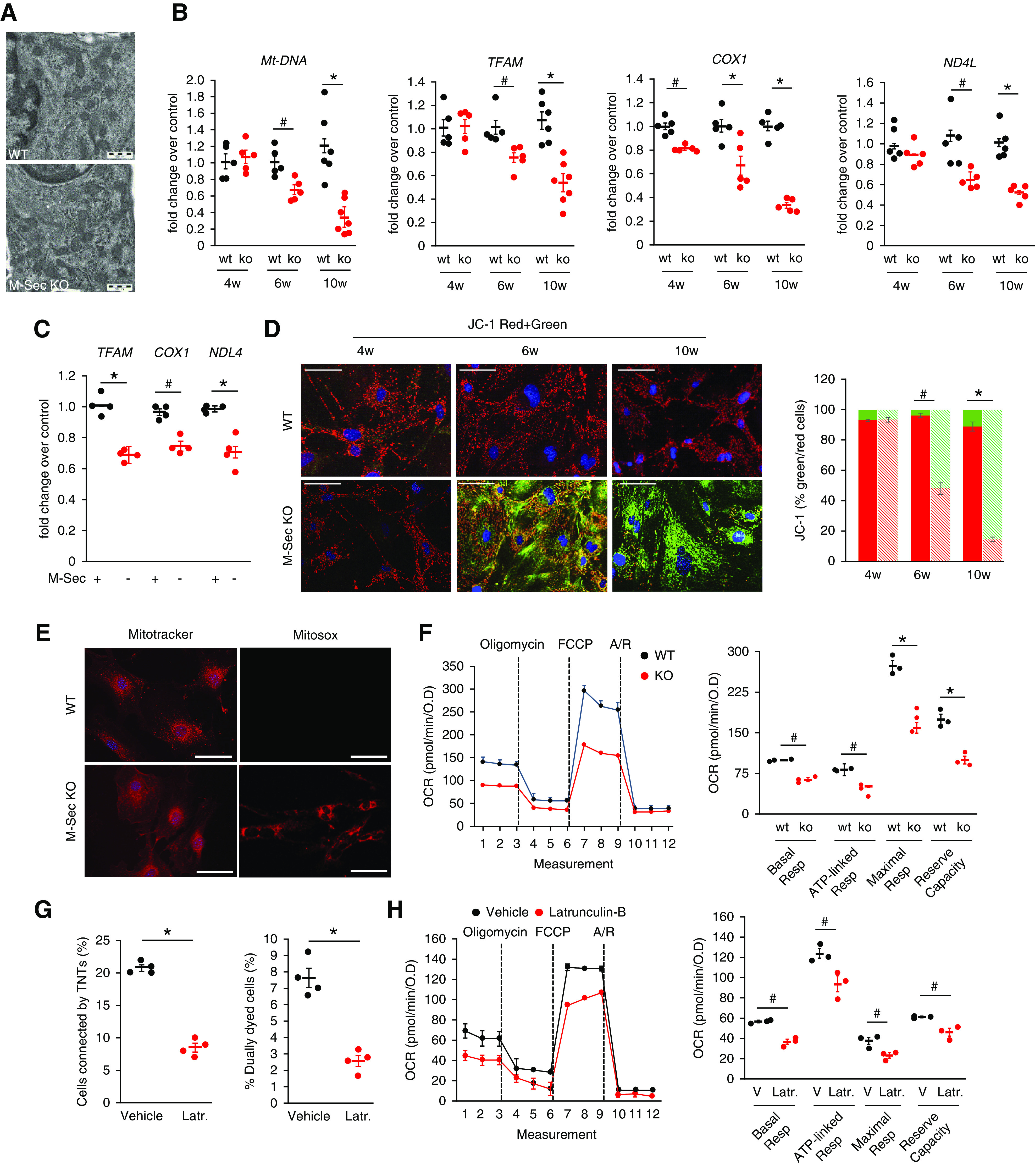Figure 7.

Effect of M-Sec deletion on mitochondrial function. (A) Electron microscopy images showing mitochondria in podocytes of WT and M-Sec–KO mice (magnification, ×10,000). (B) mtDNA relative to nuclear DNA copy number (cytochrome b/β-actin) and mRNA levels of TFAM, COX1, and ND4L were assessed in isolated glomeruli from both WT and KO mice at 4, 6, and 10 weeks of age by real-time PCR (n=5–7 per group; *P<0.001; # P<0.01 KO versus WT). (C) TFAM, COX1, ND4L mRNA levels in podocytes transfected with either M-Sec shRNA (M-Sec-) or a mock (M-Sec+) plasmid. GAPDH served as housekeeping gene (n=4; *P<0.001; # P<0.01 KO versus WT and shRNA versus mock). (D) MMP was assessed using the fluorescence probe JC-1 in podocytes from at 4-, 6-, and 10-week-old WT and M-Sec–KO mice. Nuclei are stained with DAPI (magnification ×200, bar =100 µm). The graph shows quantification of red to green JC-1 fluorescence intensity (n=4; # P<0.01; *P<0.001 WT versus KO). (E) Fluorescence live microscopy images of primary WT and M-Sec–KO podocytes stained with either the MitoTracker Red or the mitochondrial superoxide indicator MitoSoxRed (magnification 200×, bar =100 µm). (F) Mitochondrial bioenergetics was assessed in podocytes from WT and M-Sec–KO mice using the Seahorse XF-24. OCR was measured under basal conditions and following addition (dashed lines) of oligomycin, carbonyl cyanide p-trifluoromethoxyphenyl-hydrazon (FCCP), and rotenone/antimycin A (Rot/A) and results normalized to total protein OD values. In the graph are shown basal respiration, ATP-linked respiration, maximal respiration, and reserve capacity (n=3; *P<0.001, # P<0.01 WT versus KO). (G) Percentage of cells connected by TNTs (n=4; *P<0.001 vehicle versus latrunculin-B) and efficiency of mitochondrial transfer (n=4; *P<0.001 latrunculin-B versus vehicle) in podocytes treated with either vehicle or latrunculin-B (100 nM 1 hour). (H) OCR, basal respiration, ATP-linked respiration, maximal respiration, and reserve capacity, assessed as described above, in normal podocytes exposed to either vehicle or latrunculin-B (# P<0.01 latrunculin versus vehicle).
